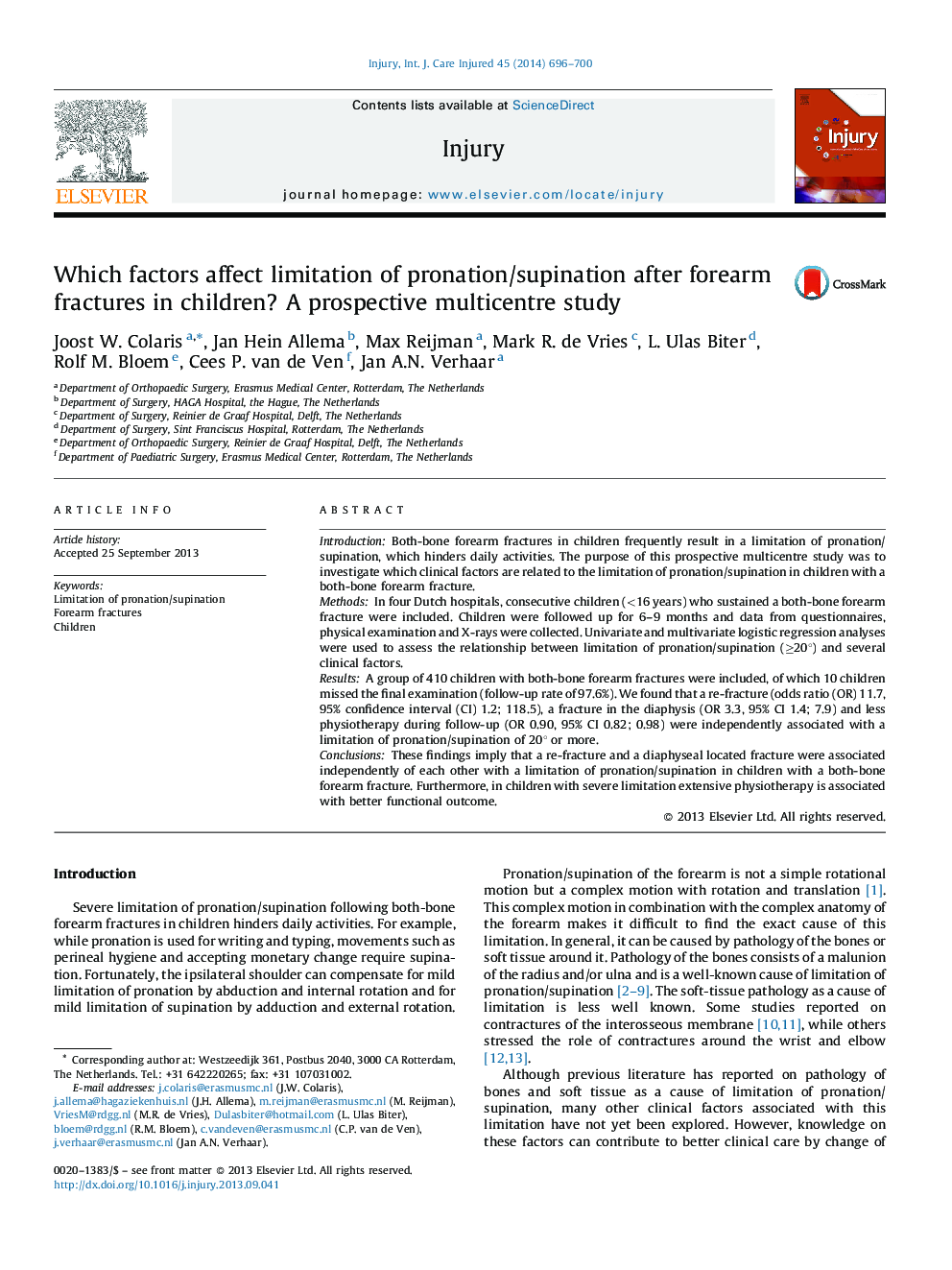| Article ID | Journal | Published Year | Pages | File Type |
|---|---|---|---|---|
| 3239475 | Injury | 2014 | 5 Pages |
IntroductionBoth-bone forearm fractures in children frequently result in a limitation of pronation/supination, which hinders daily activities. The purpose of this prospective multicentre study was to investigate which clinical factors are related to the limitation of pronation/supination in children with a both-bone forearm fracture.MethodsIn four Dutch hospitals, consecutive children (<16 years) who sustained a both-bone forearm fracture were included. Children were followed up for 6–9 months and data from questionnaires, physical examination and X-rays were collected. Univariate and multivariate logistic regression analyses were used to assess the relationship between limitation of pronation/supination (≥20°) and several clinical factors.ResultsA group of 410 children with both-bone forearm fractures were included, of which 10 children missed the final examination (follow-up rate of 97.6%). We found that a re-fracture (odds ratio (OR) 11.7, 95% confidence interval (CI) 1.2; 118.5), a fracture in the diaphysis (OR 3.3, 95% CI 1.4; 7.9) and less physiotherapy during follow-up (OR 0.90, 95% CI 0.82; 0.98) were independently associated with a limitation of pronation/supination of 20° or more.ConclusionsThese findings imply that a re-fracture and a diaphyseal located fracture were associated independently of each other with a limitation of pronation/supination in children with a both-bone forearm fracture. Furthermore, in children with severe limitation extensive physiotherapy is associated with better functional outcome.
